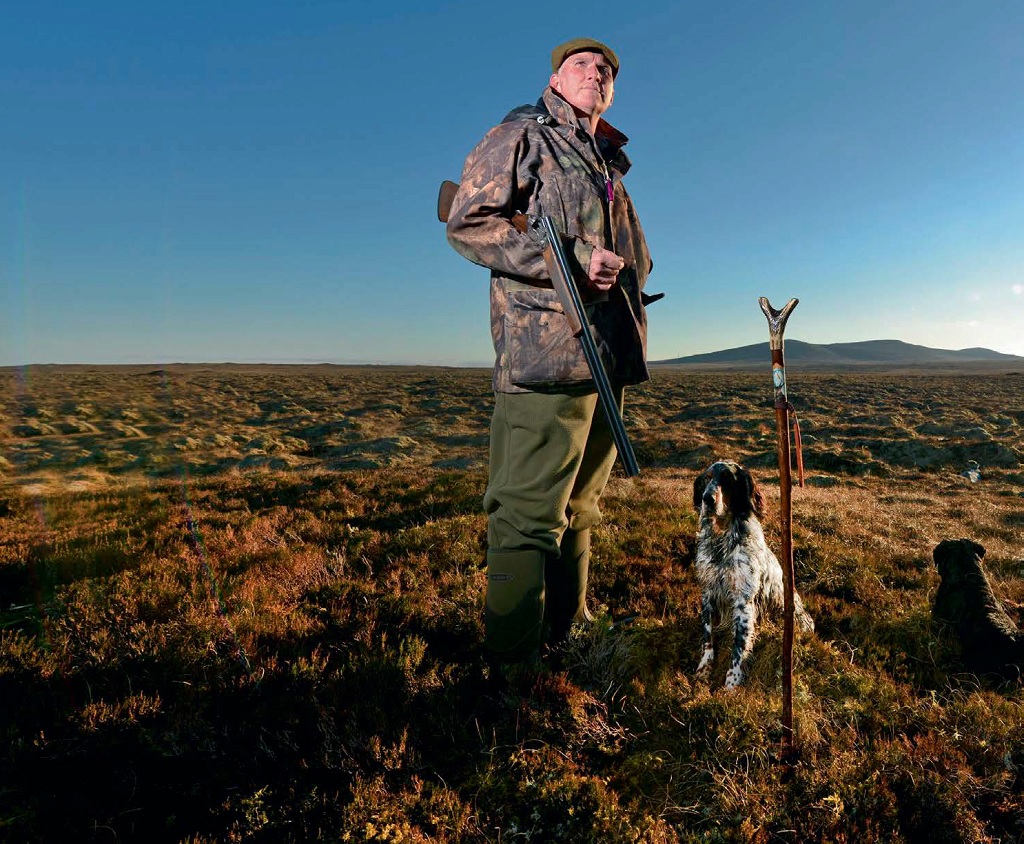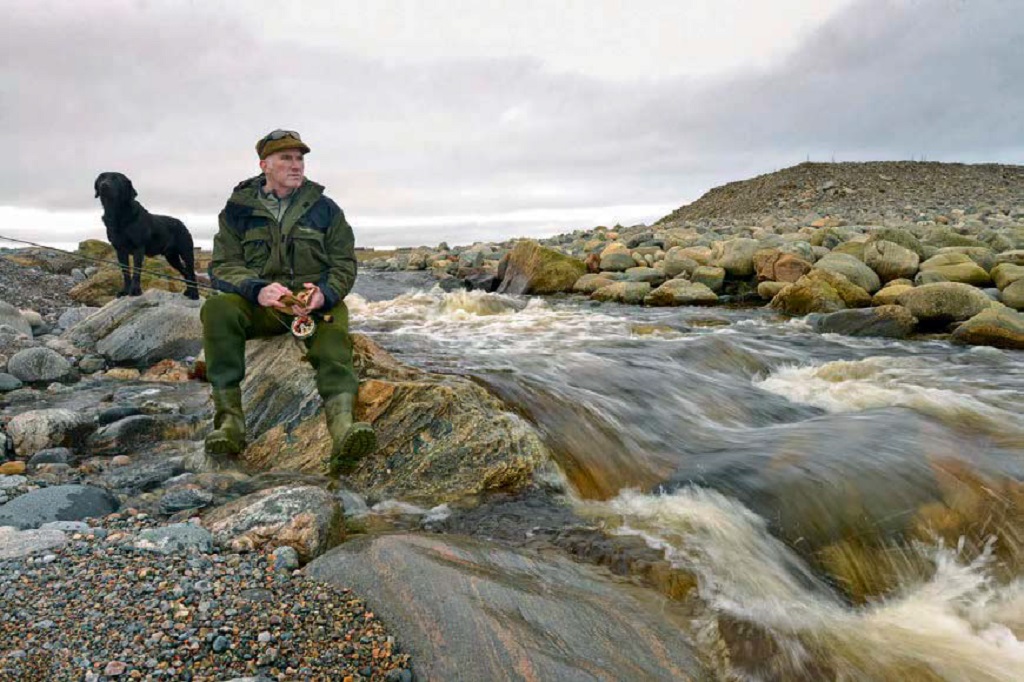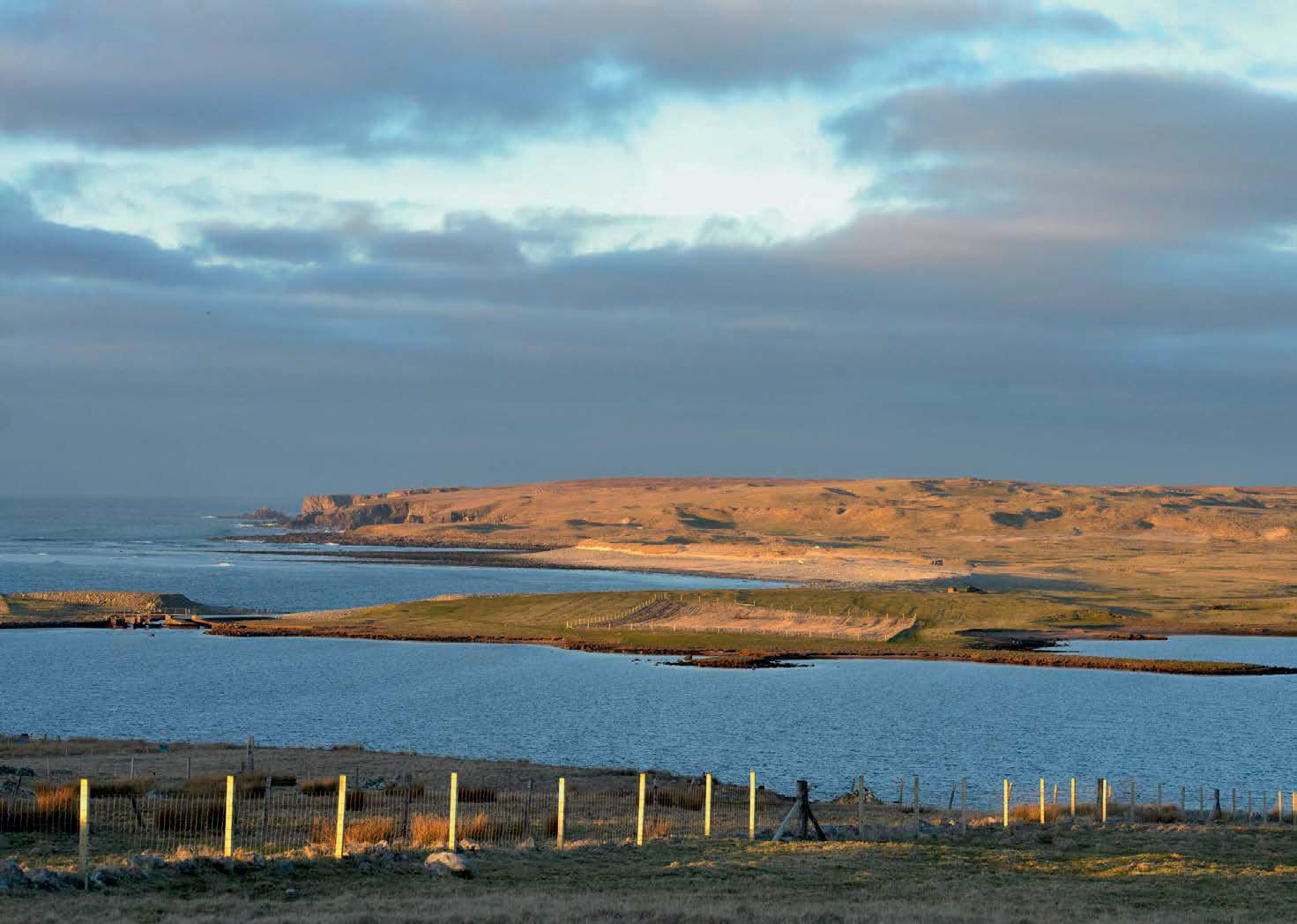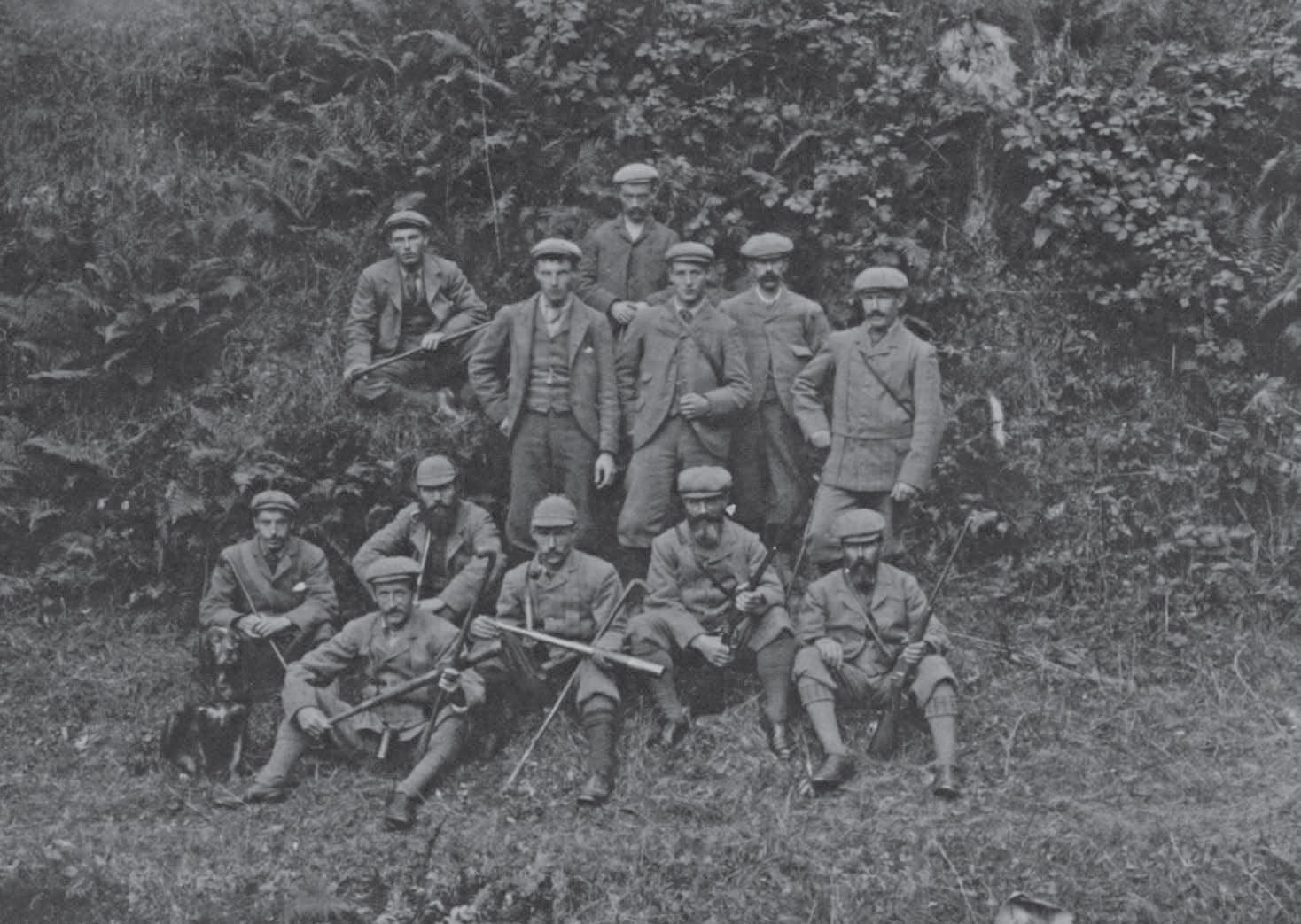
Water of life benefits Scottish sporting estate
The innovative field sports-funded buy-out of Barvas on Lewis by a crofting community which once rejected the gift of the estate is a microcosm of the huge changes sweeping Scotland’s sporting estates.
Standing at the foot of the Lewis War Memorial, looking south to the frosted summit of Clisham on the Isle of Harris peeking through the early morning haze, Angus Macleod, Kenny John Macleod and I are silent while we take in the view.
Angus is the secretary, and Kenny John a director of the Barvas Community Trust and this week they are to become landowners.
‘As part of the community we are now joint owners of all that land,’ says Angus as his arm sweeps across the great expanse of moorland to the west. ‘The estate will never be sold again, it will be in the hands of the community forever and a day, and we can manage it in a way that benefits us and nobody else.’
Twelve miles to the west of where we are standing is the 36,000 acre Barvas Estate, which, by the time this is in print, will be owned by the crofting community who have lived on and worked this land for centuries.
In 1867 the proprietor of the Isle of Lewis, Sir James Matheson, laid out most of the island for sporting let. The Barvas Estate boasted a 20,000 acre grouse moor and salmon fishings on the Barvas and Arnol rivers.
Up until 1925 the estate was continuously leased by several different sporting tenants, all seasonal visitors from afar, including celebrated explorer Talbot Clifton, whose scalps included member of the IRA in an argument over a car in 1922 and who is rumoured to have dined on mammoth rump steaks recovered from the frozen permafrost in Canada.

Barvas gamekeeper Angus Macleod stands on the estate’s moor (Photo: Angus Blackburn)
Not once has the estate had an occupier landowner; absenteeism has long been the norm in the Highlands & Islands, but now Barvas has 1,100 owner-occupiers.
‘The community inhabit several small crofting townships and have largely been left alone to run their crofts as they like. ‘We see the landlords and their sporting tenants from time to time on the loch and around and about, but many of us don’t know who we pay our rent to,’ says Kenny John. ‘They don’t interfere or get involved in the community.’
It could have all been very different, of course. In the greatest of all historical ironies, of which there are many in the Isles, in 1925 former owner Viscount Leverhulme offered ownership of the land to the crofters free of charge. But he had failed to understand that they wanted to be crofters, not landowners.
Their status as crofting tenants was protected in law and they felt that ownership held too much risk, so they declined.
But Barvas’s inhabitants are no longer risk-averse. In 2010 Urras Sgire Oighreachd Bharabhais Community Company (USOBCC) was registered to investigate the feasibility of buying the estate, although the ambition had been ticking away since early 2004.
‘Our land can be sold on the open market if the landlord so decides,’ says Angus. ‘Somebody from far away, or another country even, could have bought Barvas. A bad landlord could have an adverse effect on us crofting tenants. We thought it was better if we owned the land so nobody can come in and mess us about. We want control of our own land.’

Fishing stocks on the Barvas lochs and rivers have improved since coming under community ownership. (Photo: Angus Blackburn)
That desire to take control of their own destiny was compelling: in February 2014 a community ballot voted 86% in favour of the purchase and shortly afterwards the landowners were approached by the USOBCC with an offer, which has been accepted.
Backed by government cash and the SNP commitment to reach a million acres in community ownership by 2020, this is the latest of the community buy-outs that are popping up all over Scotland. The community at Barvas benefitted from the experience and guidance of the neighbouring estate, Galson, which was bought in the teeth of opposition from the owners by their community in 2007, and has since been visible success. With the Galson purchase, over half of the Western Isles is now owned by its resident communities.
Unlike the landowners of Galson, the Barvas owners saw it coming and went with the flow. It is very hard to say No to an entire community.
The supporters of community ownership argue that as absentee landowners have been bought out throughout the Western Isles, long-entrenched attitudes have changed and a new energy has been unleashed. Great Bernera, a few miles south of Barvas was recently community purchased following the death of the laird, James Bond inspiration Count Robin de la Lanne-Mirrlees.
South Uist, the largest area of community owned land in the UK, has been a qualified success since its purchase in 2006 largely because of its renowned wildfowling and field sports, especially early on.
Changing attitudes towards land ownership have also altered the political landscape when it comes to field sports.
When in 2013 the Scottish Government gave the stalking lease on the island of Raasay to the highest bid, which came from a commercial outfit, the reaction of the islanders – who had built up the stalking for the previous 18 years – was sufficiently volcanic to force the stalking company to withdraw in favour of the Raasay Crofters Association. Just how big a punch a determined community could pack was underlined in Assynt, when the stalking revenues of the community-owned estate were severely threatened by the John Muir Trust’s slaughter of deer on the neighbouring estate.
If leveraging the potential of field sports, so economically important in the Hebrides, has been difficult for community buyouts, sometimes the root cause is the community, particularly when they now own rivers that were comprehensively poached when owned by absentee landlords living hundreds of miles away.

More than half of the Western Isles is now owned by its resident communities. (Photo: Angus Blackburn)
‘Every summer the crofters saw these strange people from far away, fishing their lochs and rivers,’ explains Angus. ‘They always thought of the fish as part of their common grazings, part of their tenancy, and had a deep belief that the fish belonged to them, but of course they didn’t. In law the landlords owned the fishing rights.’
Whether it’s taking a few fish from the burn running through your croft, or netting the river mouth for sale at Billingsgate, the irony is that endemic poaching has compromised the value of the rivers upon which some communities now depend. Where once locals and estate owners alike shipped salmon to London every week, now the locals have got the message.
Conservation is king and severely depleted stocks are now showing signs of improvement. In many ways Barvas had been run in a more enlightened manner than many West Coast sporting estates.
Soon after purchasing the estate Talbot Clifton died en route to Timbuktu, and Barvas passed to his friend, food flavourings manufacturer William Duckworth, who was also a keen sportsman and invested hugely in the estate. On his death in 1949, Barvas Estates Ltd was formed, is now controlled by his two grandchildren, and has since achieved a high standard of estate management, including the restocking of salmon ova, maintaining two angling boats on the loch, and forming The Barvas Club syndicate for shooting.
In June 2014 Barvas was valued at £1.875 million, which included all the land, a salmon hatchery, fishing and shooting rights, plus several properties on the estate. With a ceiling of £700,000 from the Scottish Land Fund and the local council, the community were well short of the amount needed for a full purchase, so several houses and the islands of North Rona and Sulaisgeir (famous for its annual guga hunt) were sold separately.

When Queen Victoria purchased the Balmoral estate in 1848, rich aristocrats and wealthy industrialists followed suit
The land and hatchery (£520,000) and shooting (£150,000) were bought by the community trust, with the shooting leased back to the Barvas Estate Trust for £3,000 a year for 25 years.
However, plans to include the fishing rights for £650,000 are on hold. With ambitions for cash-generating wind turbines and affordable housing far off, keen fisherman and ex-islander Kenneth MacIver has come up with a creative scheme where the community acquires the fishing rights and leases them to ten shareholders for £67,500, giving them eight rods each for one week a year for 25 years.
So far four shareholders have been identified, one of whom has acquired the Barvas Inn, which sleeps 14, with a view to allowing the others to use it.
Accurate numbers are hard to come by, but the five-year average for June-September is 204 salmon (‘excluding those taken by local fihermen’ as the prospectus amusingly adds). The estate can accommodate 7-8 rods fishing for sea trout, brown trout and salmon on the lochs, two rivers and sea pools. Shareholders will also be allocated one week’s mixed shooting of Barvas’ natural stocks of snipe, woodcock, duck, golden plover, greylag geese, rabbits and grouse, plus access to Barvas’ growing deer population.
The fishing, which in living memory has meant little other than one for the pot, is now seen as the means to secure a substantial and reliable annual income of £60,000 for the community to reinvest in the estate.
Nearly 100 years since Barvas’ crofters declined the land as a gift, changing attitudes and taxpayer funding are leading to a quiet grass-roots revolution. No longer are field sports the domain of wealthy absentee landowners, but are now a lifeline central to communities’ aspirations to take control of the land.
(This feature was originally published in 2016)
TAGS

